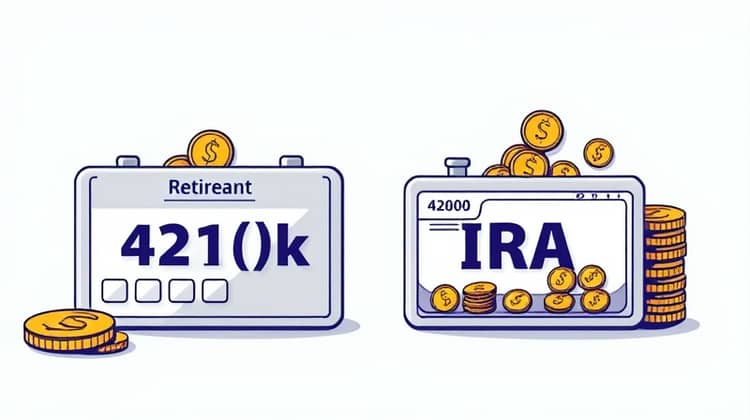As we navigate through life, one of our principal concerns should be ensuring a secure financial future, particularly during our retirement years. Unfortunately, many individuals find themselves falling short on retirement savings due to various reasons, such as unexpected expenses or lack of awareness about retirement planning. This is where catch-up contributions come into play, offering a valuable option for those nearing retirement age to bolster their savings.
Catch-up contributions represent an opportunity for individuals aged 50 and older to contribute additional funds to their retirement accounts beyond the standard contribution limits. Whether it's for a 401(k), IRA, or other retirement accounts, these contributions can significantly enhance one's financial readiness when it comes time to retire. Understanding the ins and outs of catch-up contributions can empower individuals to make better financial decisions.
In this article, we will explore the eligibility requirements, various retirement accounts that allow catch-up contributions, the advantages and disadvantages of utilizing them, and critical tax implications to consider—all aimed at providing you with the information you need to maximize your retirement savings.
Understanding Catch-Up Contributions

Catch-up contributions are additional contributions that individuals aged 50 and above can make to their retirement accounts, allowing them to build their funds as they approach retirement. These contributions go beyond the regular annual limits set by the IRS, providing a unique opportunity to enhance savings significantly.
For many people, the reality is that retirement savings are often not enough to support their desired lifestyle, primarily if they start saving later in life. Catch-up contributions are designed to recognize this gap and provide a way to make up for lost time, potentially leading to a more comfortable retirement experience.
By utilizing catch-up contributions, individuals can take charge of their financial future, ensuring that they have adequate resources available when they retire. This article will delve into how catch-up contributions work and the specific strategies to implement them.
Eligibility Requirements

To take advantage of catch-up contributions, you must meet specific eligibility criteria set by the IRS.
- You must be aged 50 or older on or before the end of the calendar year.
- You should have a qualified retirement account that allows for catch-up contributions, such as a 401(k) or IRA.
- You must have already contributed the maximum allowed limit to your retirement accounts for the year.
Meeting these eligibility requirements can open new avenues for retirement savings. It’s essential to consult with a financial advisor to understand your options and ensure you’re making the most of your contributions. This preparedness not only sets a solid foundation for retirement but also provides peace of mind.
Types of Retirement Accounts with Catch-Up Contributions

Catch-up contributions can be made to several types of retirement accounts, each with its regulations. Having an understanding of where these contributions can go allows one to maximize the potential benefits effectively.
The two most common types of accounts that facilitate catch-up contributions include the 401(k) and Individual Retirement Accounts (IRAs). Knowing the limits and rules related to each is essential for strategizing your savings appropriately.
Tips for Using Catch-Up Contributions Effectively

Utilizing catch-up contributions can significantly enhance your retirement savings, but using them effectively requires a strategic approach.
- Prioritize increasing your contributions as you near retirement age.
- Consult with a financial advisor to customize your contribution strategy based on your financial situation and retirement goals.
- Monitor your retirement accounts regularly to ensure you are on track to meet your savings objectives.
By following these tips, you can ensure that your catch-up contributions have a meaningful impact on your overall retirement savings plan.
Pros and Cons of Catch-Up Contributions

Like any financial strategy, catch-up contributions come with their own set of advantages and disadvantages. Assessing these is crucial in determining if this strategy fits within your overall retirement plan.
The main advantage is the ability to save more as the retirement date approaches, which can significantly increase the total balance available upon retirement. However, some may find the additional contribution amounts challenging, depending on their current financial situation.
- Pros: They allow for increased savings as you approach retirement.
- Cons: They can put additional strain on the budget, affecting other financial goals.
Understanding these pros and cons can help you make informed decisions about your retirement savings strategy and whether catch-up contributions are appropriate for your financial situation.
Tax Implications

Catch-up contributions not only provide a way to enhance savings but also come with specific tax implications that can affect your overall retirement strategy. Knowing how these contributions impact your taxes is essential for planning. For instance, contributions made to a traditional 401(k) or traditional IRA may be tax-deductible, which can provide immediate tax benefits.
However, earnings on your contributions will generally be taxed upon withdrawal during retirement, which is essential to keep in mind while planning your overall tax situation. Additionally, with Roth IRAs, contributions are made with after-tax dollars, meaning that while there are no immediate tax breaks, qualified withdrawals may be tax-free under certain conditions.
Understanding these varying tax implications can lead to more effective planning as you look to grow your retirement savings and navigate your tax obligations effectively.
Conclusion

In conclusion, catch-up contributions present an invaluable opportunity for individuals aged 50 and older to increase their retirement savings. By understanding their benefits, eligibility requirements, and implications, you can strategically plan for a more comfortable financial future during retirement.














